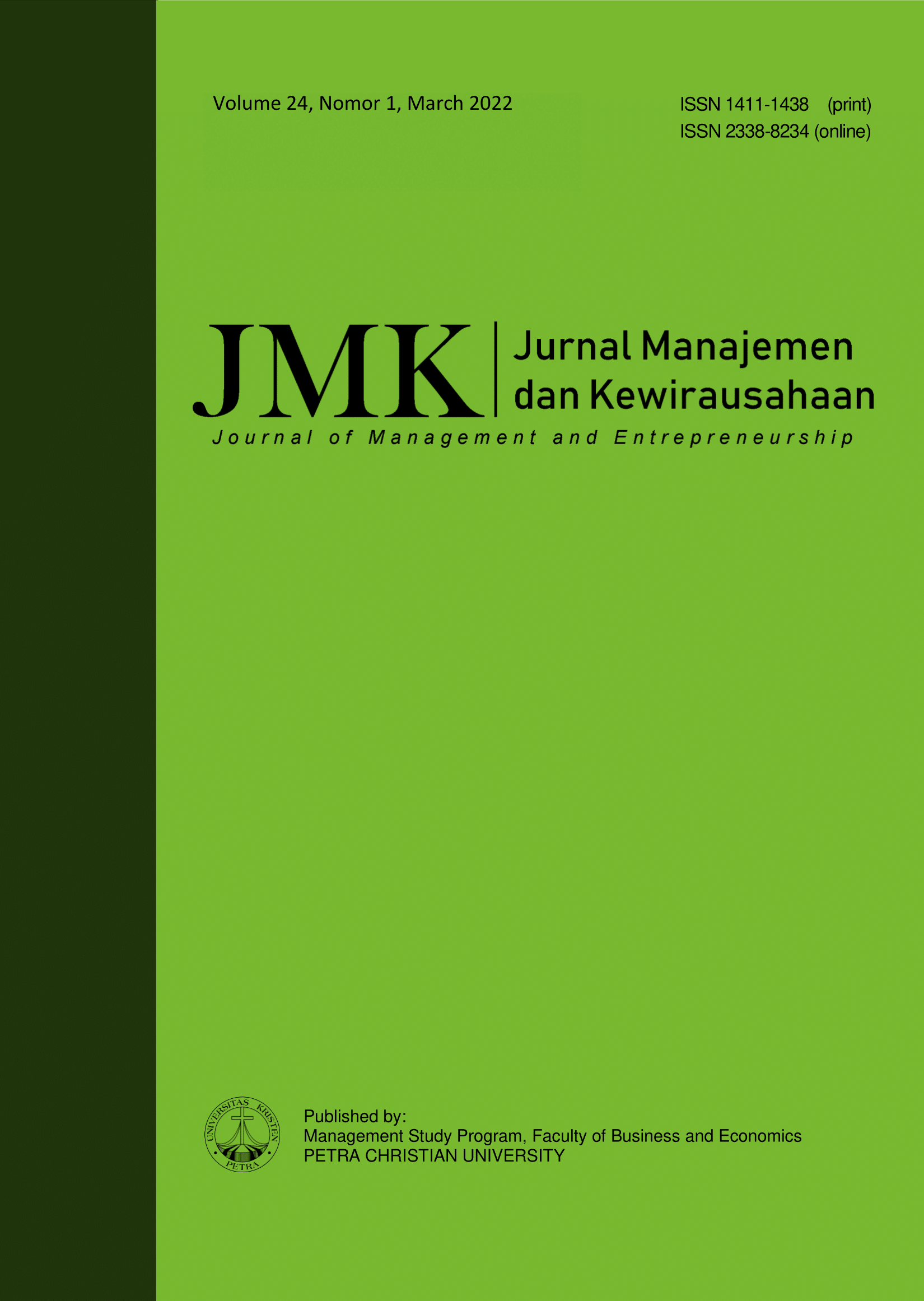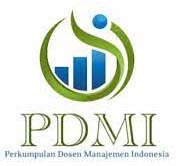WEBSITE AS AN COMMUNICATION TOOL AND BRANDING STRATEGY IN TELECOMMUNICATION COMPANIES
-
 :
:
https://doi.org/10.9744/jmk.24.1.81-90
Keywords:
Social network analysis, DANA, gopay, fintech, startup businessAbstract
This research had the purpose of investigating the utilization of a company's official website as a communication medium and for online branding purposes in the telecommunication industry in Indonesia. This study used a population of official websites from seven telecommunication companies in Indonesia. The indicators that had been used to analyze website content, website ease of use, and website interactivity. The results of this study showed that 100% of telecommunication companies in Indonesia had a website that can be used as an online branding strategy. The indicators that were mostly used by these companies for online branding were website content (100%) and website ease of use (93.65%), while the use of website interactivity (53%) still needed to be maximized. The findings of this study were useful in revealing how telecommunications companies in developing countries used their websites as a communication medium for online branding
References
Aaker, D. (1991). Managing brand equity: Capitalis-ing on the value of a brand name. New York, NY: Free Press.
Aaker, D. (2007). Innovation: Brand it or lose it. Cali-fornia Management Review, 50(1), 8–24. https://doi.org/10.2307%2F41166414
Aripova, M. S. (2021). Importance of branding in hotel business. Scientific Progress, 1(6), 1092–1097.
Barreda, A. A., Bilgihan, A., Nusair, K., & Okumus, F. (2016). Online branding: Development of hotel branding through interactivity theory. Tourism Management, 57, 180–192. doi:10.1016/j.tourman.2016.06.007
Berthon, P., Pitt, L., & Watson, R. T. (1996). Marketing communication and the world wide web. Bu-siness Horizons, 39(5), 24–32. https://doi.org/10. 1016/S0007-6813(96)90063-4
Burhan, F. A. (2022). Tantangan pers RI era digital: Masyarakat andalkan instagram dkk. Retrieved from https://katadata.co.id/desysetyowati/digital/ 62024a0932d0f/tantangan-pers-ri-era-digital-ma syarakat-andalkan-instagram-dkk.
Cheng, F. F., & Cheok, J. (2008). Importance of branding property developers in Malaysia. Sunway Academic Journal, 5, 65–81.
Ghachem, L. (2011) Online branding in newspapers: A conceptual model. Communications of the IBIMA, 489627, 1–7. DOI: 10.5171/2011.489627
Ghaleb, M., & Kaplan, B. (2021). The importance of branding for organizations: Decision mechanism on willingness to pay a price premium for brand-ed audit services in emerging markets. In Aksoy T., & Hacioglu U. (Eds.), Auditing eco¬system and strategic accounting in the digital era: Global approaches and new opportunities (pp. 287–313). Springer, Cham. https://doi.org/10.1007/ 978-3-030-72628-7_13
Gravetter, F. J., Wallnau, L. B., Forzano, L. A. B., & Witnauer, J. E. (2020). Essentials of statistics for the behavioral sciences. 10th Edition. Cengage Learning.
Hashim, N. H., Hasan, H. M., & Sinnapan, S. (2007). Australian online newspapers: A website content analysis approach to measure interactivity. Pre-sented in 18th Australasian Conference on Infor-mation Systems (ACIS), 5–7 Dec 2007, Too-woomba.
Hernández, B., Jiménez, J., & Martín, M. J. (2009). Key website factors in e-business strategy. Inter-national Journal of Information Management, 29(5), 362–371. https://doi.org/10.1016/j.ijinfomgt.2008.12.006
Holsti, O. R. (1968). Content analysis. In G. Lindzey & E. Aronson, (Eds.), The handbook of social psychology, 2, 596–692. Reading, MA: Addison-Wesley,
Ibeh, K. I. N., Luo, Y., & Dinnie, K. (2005). E-branding strategies of internet companies: Some preliminary insights from the UK. Journal of Brand Management, 12(5), 355–373. http://dx.doi.org/10.1057/palgrave.bm.2540231
Kapferer, J. (1992). Strategic brand management. New York, NY: Free Press.
Kenney, M., & Curry, J. (1999). E-commerce: Implications for firm strategy and industry configuration. Industry and Innovation, 6(2), 131–151. https://doi.org/10.1080/13662719900000008
Khairuddin, I. (2021). Industri telekomunikasi jadi kunci sukses transformasi digital. Retrieved from https://techbiz.id/2021/01/industri-telekomunika si-jadi-kunci-sukses-transformasi-digital/.
Kolbe, R. H., & Burnett, M. S. (1991). Contentanalysis research: An examination of applications with directives for improving research reliability and objectivity. Journal of Consumer Research, 18(2), 243–250. https://doi.org/10.1086/209256
Krippendorff, K. (1980). Validity in content analy-sis. In E. Mochmann (Ed.), Computerstrategien für die kommunikationsanalyse (pp. 69–112). Frankfurt, Germany: Campus.
Liu, C., Arnett, K. P., & Litecky, C. (2000). Design quality of websites for electronic commerce: For-tune 1000 webmasters' evaluations. Electronic Markets, 10(2), 120–129. https://doi.org/10.1080/10196780050138173
Lombard, M., Snyder‐Duch, J., & Bracken, C. C. (2002). Content analysis in mass communication: Assessment and reporting of intercoder reliability. Human Communication Research, 28(4), 587–604. https://doi.org/10.1111/j.1468-2958.2002. tb00826.x
Manikandan, S. (2011). Frequency distribution. Journal of Pharmacology and Pharmacotherapeu-tics, 2(1), 54–56. doi:10.4103/0976-500x.77120
McMillan, S. J. (2000). The microscope and the moving target: The challenge of applying content analysis to the World Wide Web. Journalism & Mass Communication Quarterly, 77(1), 80–98.
Neelotpaul, B. (2010). A study on interactivity and on-line branding. Advances in Management, 3(3), 13–17.
Nong, Z., & Gainsbury, S. (2019). Website design fea-tures: Exploring how social cues present in the online environment may impact risk taking. Human Behavior and Emerging Technologies, 2, 39–49. doi:10.1002/hbe2.136
O Loughlin, D., & Szmigin, I. (2007). The challenge of sustaining the relationship approach: Financial supplier perspectives. Australasian Marketing Journal, 15(3), 35–48.
Palla, P., Tsiotsou, R. H., & Zotos, Y. T. (2013). Is website interactivity always beneficial? An elaboration likelihood model approach. Advances in Advertising Research, 4,131–145. https://doi.org/ 10.1007/978-3-658-02365-2_10
Rahimnia, F., & Hassanzadeh, J. F. (2013). The impact of website content dimension and e-trust on e-marketing effectiveness: The case of Iranian commercial saffron corporations. Information & Management, 50(5), 240–247. https://doi.org/10. 1016/j.im.2013.04.003
Rizaty, M. A. (2021). Masyarakat RI paling banyak gu¬nakan internet untuk berkomunikasi. Retrieved from https://databoks.katadata.co.id/datapublish/ 2021/07/29/masyarakat-ri-paling-banyak-gunak an-internet-untuk-berkomunikasi
Rowley, J. (2009). Online branding strategies of UK fashion retailers. Internet Research, 19(3), 348–369. http://dx.doi.org/10.1108/10662240910965 397
Simmons, J. (2007). I-branding: Developing the inter-net as a branding tool. Marketing Intelligence & Planning, 25(6), 544–562. http://dx.doi.org/10. 1108/02634500710819932
Trajković, S., & Stanković, M. (2017). The importance of branding in franchising. Presented in 4th In¬ter-national Scientific Conference, Agribusiness MAK-2017," European Road" IPARD 2015-2020, 27-28 January 2017, Kopaonik, Serbia. Proceedings (pp. 371–379).
Tzokas, N., & Saren, M. (2004). Competitive advan-tage, knowledge and relationship marketing: Where, what and how? Journal of Business & Industrial Marketing, 19(2), 124–135. http://dx. doi.org/10.1108/08858620410524 007
Upshaw, L. B. (2001). Building a brand.comm. Design Management Journal (Former Series), 12(1), 34–39. https://doi.org/10.1111/j.1948-7169.2001 tb00531.x
Vlahvei, A., Notta, O., & Grigoriou, E. (2013). Esta-blishing a strong brand identity through a web¬site: The case of Greek Food SMEs. Procedia Economics and Finance, 5, 771–778. https://doi. org/10.1016/S2212-5671(13)00009-9
Voorveld, H. A., Van Noort, G., & Duijn, M. (2013). Building brands with interactivity: The role of prior brand usage in the relation between per-ceived website interactivity and brand responses. Journal of Brand Management, 20(7), 608–622. DOI:10.1057/bm.2013.3
Vrontis, D. (1998). Strategic assessment: the import-ance of branding in the European beer market. British Food Journal, 100(2), 76–84. DOI:10. 1108/00070709810204066
Wang, W. (2011). A content analysis of reliability in advertising content analysis studies. Electronic Theses and Disertations. Paper 1375. East Tenne-see State University.
Downloads
Published
How to Cite
Issue
Section
License
Authors who publish on this journal agree to the following terms:
- Authors retain copyright and grant the journal right of first publication with the work simultaneously licensed under a Creative Commons Attribution License that allows others to share the work with an acknowledgement of the work's authorship and initial publication in this journal.
- Authors are able to enter into separate, additional contractual arrangements for the non-exclusive distribution of the journal's published version of the work (e.g., post it to an institutional repository or publish it in a book), with an acknowledgement of its initial publication in this journal.
- Authors are permitted and encouraged to post their work online (e.g., in institutional repositories or on their website) prior to and during the submission process, as it can lead to productive exchanges, as well as earlier and greater citation of published work (See The Effect of Open Access).


















